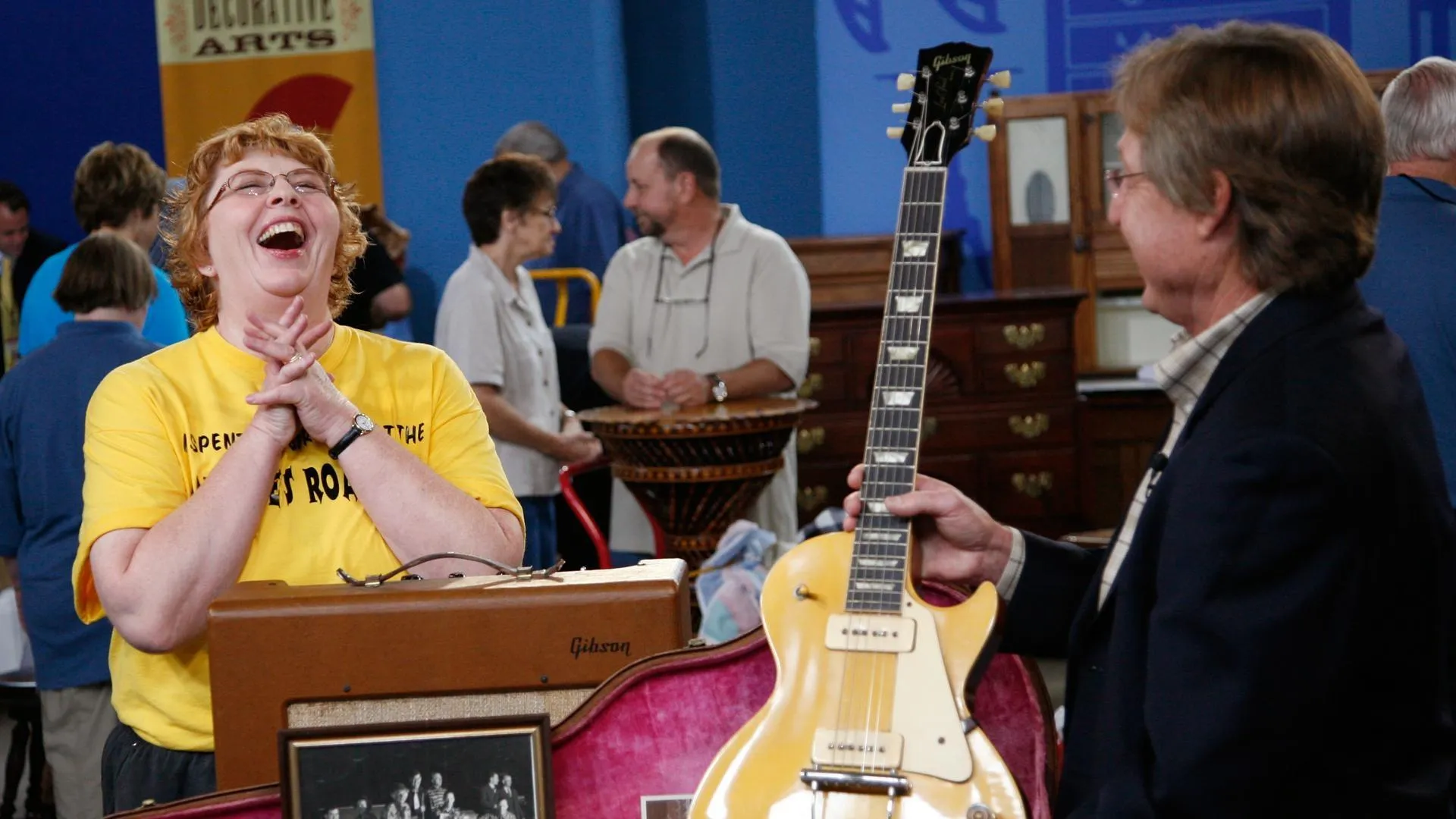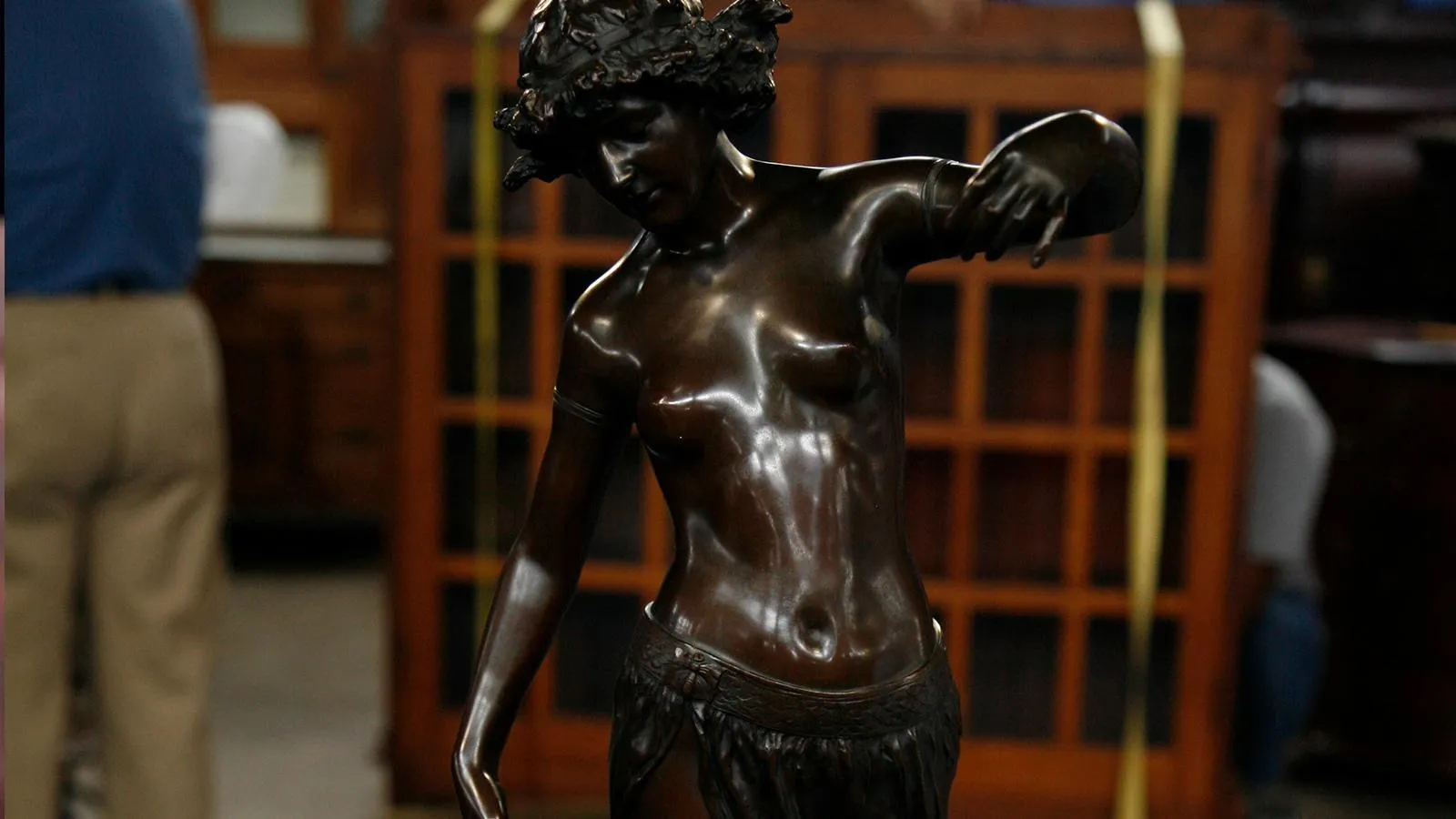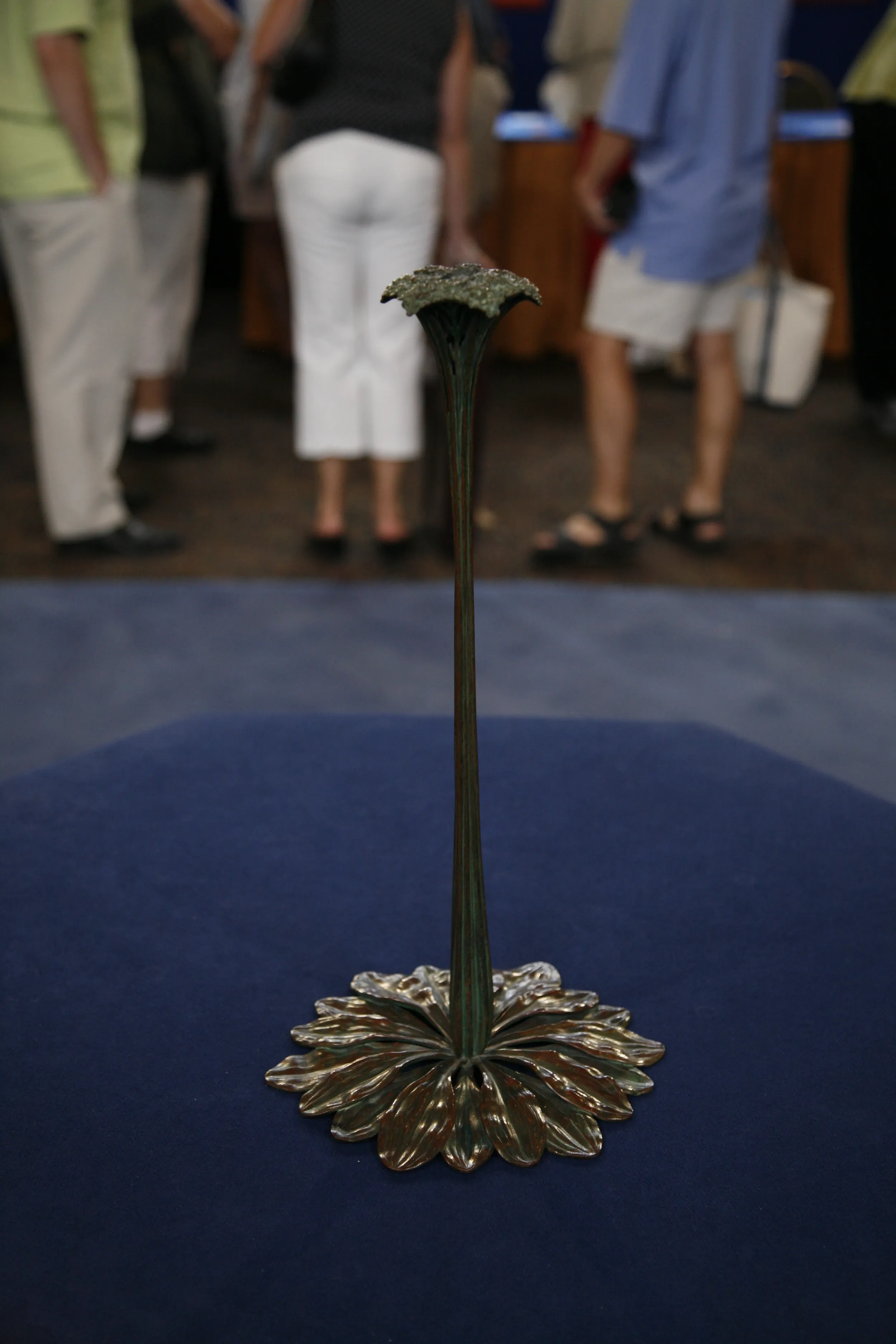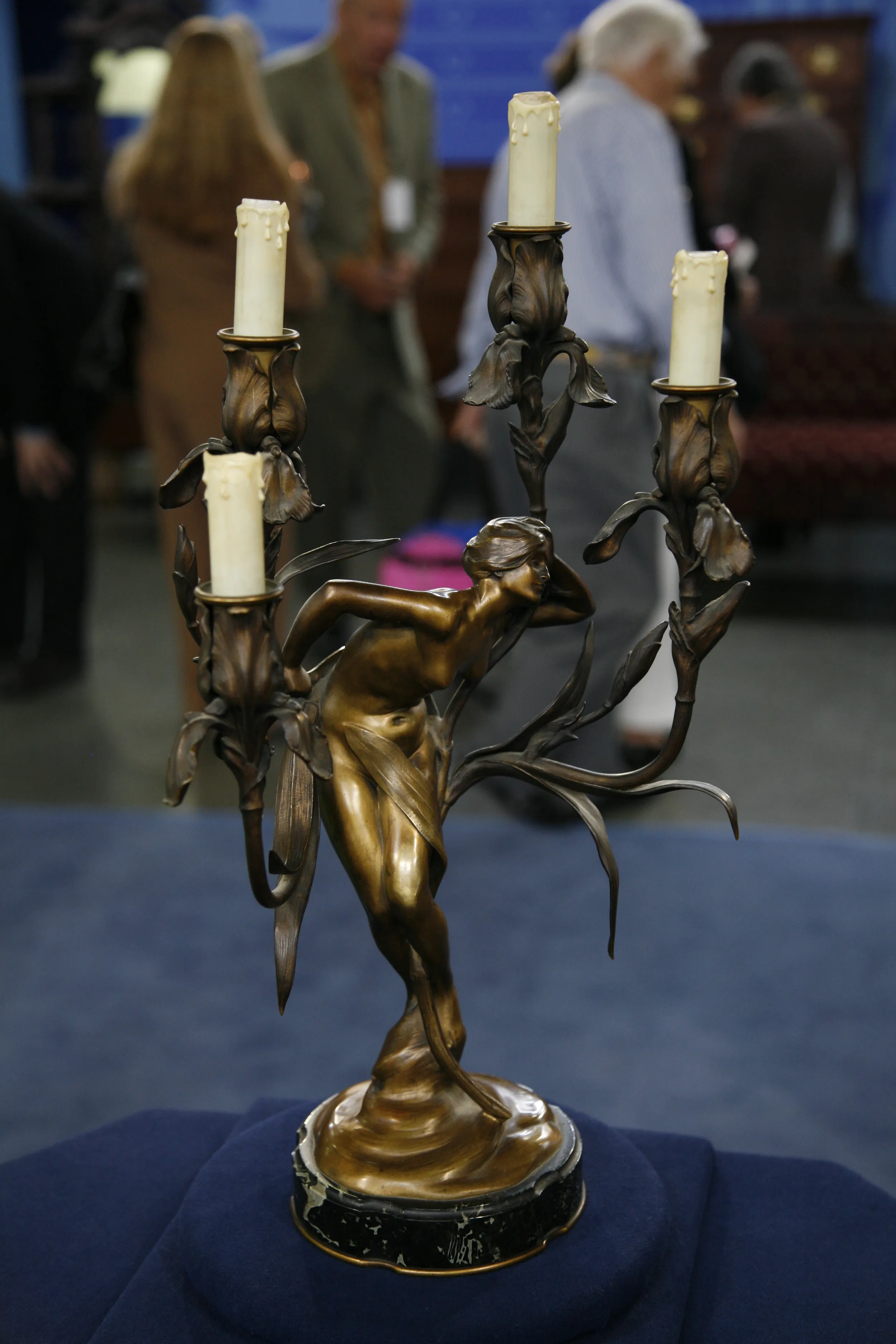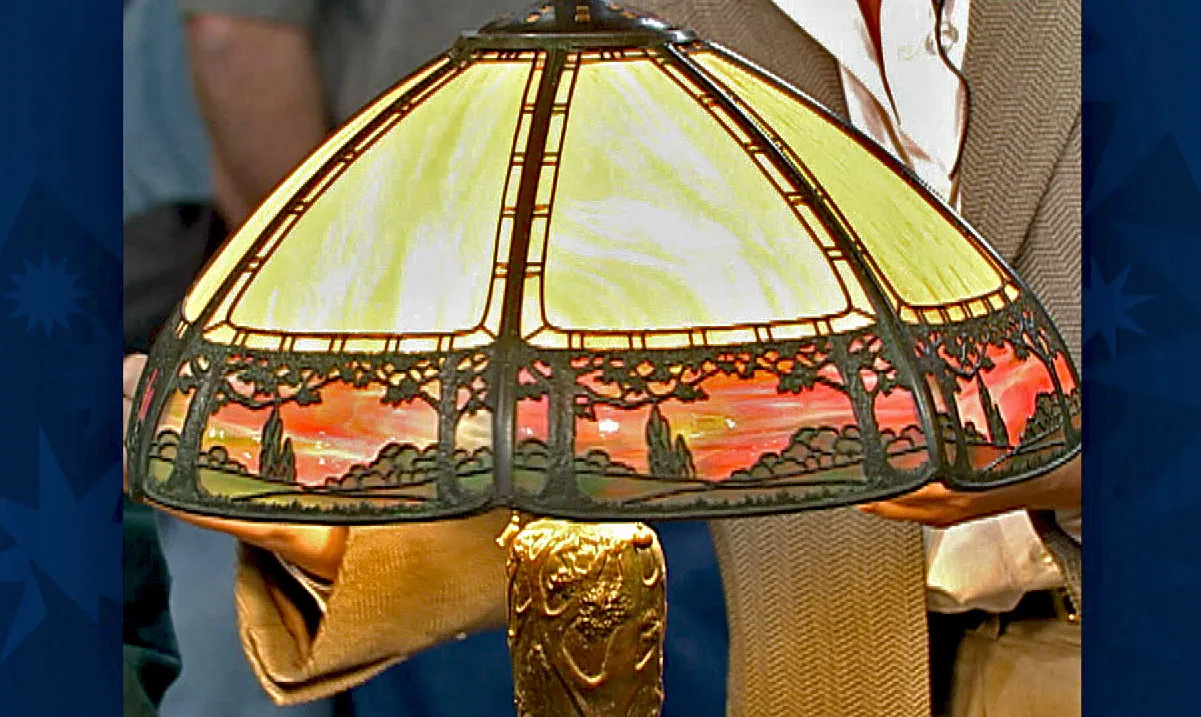GUEST: I was a caretaker for an elderly lady, and she had the lamp. When she passed away several years ago, I was always interested in the lamp, and I asked the estate what they were going to do with the lamps, and they offered them to me, then, so... This was my favorite one. I cleaned the lamp for 20 years, and I, every time I cleaned it, I noticed another detail on it, and it just drew my attention every time I saw the lamp.
APPRAISER: And she had ever talked about it, say where she got it from?
GUEST: She did talk about the lamp. The lamp came from one of the lumbermen's houses in North Wichita. At that time, she owned the house, and it was one of the original furnishings to the house.
APPRAISER: And you found out who the maker was.
GUEST: I eventually found out that it was Oscar Bach, and I know very little about the maker other than the name, and that's about it.
APPRAISER: Well, Oscar Bach was a pretty prominent metalworker. He was born in Germany in 1884, and he was trained in Germany. He did a lot of work in Germany itself. He moved to New York in 1911. He went into business with his brother, and they did all kinds of metalwork. The piece you brought in is bronze, but they also worked in wrought iron, and they even did work later on in stainless steel. Oscar Bach was great at promoting himself. He exhibited in many international exhibitions. He won a grand prize in an exhibition in Turin in 1911. He exhibited at the Metropolitan Museum of Art. And he really got a lot of commissions all over this country-- private houses, museums, the Chrysler Building, the Empire State Building. He did work for all of them. The lamp you brought in is from the Art Deco period, from the 1920s, 1930s, and it has these wonderful, stylized Art Deco figures here that are quite interesting, and then sort of unusual kind of floral decoration. I think a very interesting part of the piece is the glass globe here. As we turn the light off, we'll see that it has this fabulous gold iridescence, and this is very indicative of the work of the Steuben glass company. Oscar Bach actually bought these globes from Steuben and incorporated them into this lamp, as well as other lamps he did. He died in 1957, and he virtually worked up until the end. The market for his work has been growing steadily. I would think ten years ago, nobody even knew who he was, and certainly over the last five or six years, his work has started to come out, come on the market. This model actually has come up a few times in the last couple of years. An auction value on this would be between $3,000 and $5,000.
GUEST: Really!
APPRAISER: Mm-hmm.
GUEST: Wonderful!
APPRAISER: Really great lamp and it's in really great condition.
GUEST: Thank you.
APPRAISER: Don't do anything-- a soft rag, and that's really all that has to be done to it.
GUEST: And that's all it's had for the last 20 years is a soft rag-- thank you so much.
APPRAISER: That's all-- you're welcome.

